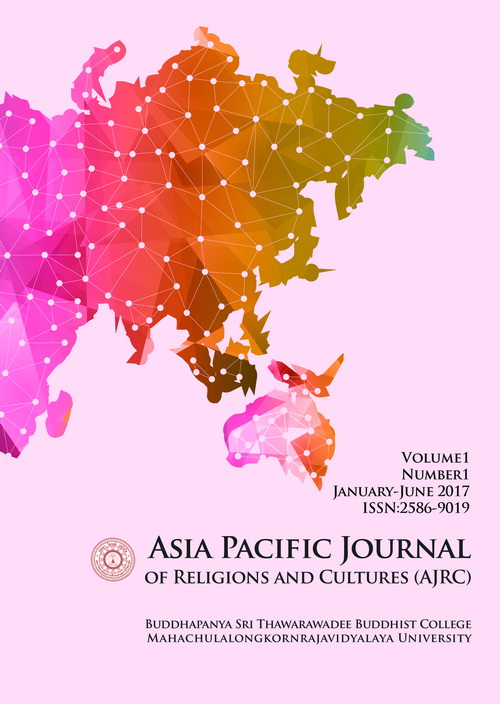Mental Health Awareness in Buddhism
Main Article Content
Abstract
The topic of this article is “Mental Health Awareness in Buddhism” It was discussed about Mental Health on Buddhism. Mental health is defined as a state of well-being in which every individual realizes his or her own potential. It can cope with the normal stresses of life, work productively and fruitfully, and be able to make a contribution to her or his community. First, the Buddha taught, the monks should not follow two extremes ways; 1. The Extreme of sensual indulgence and 2 The xtreme of self-mortification. The monks should go on the Middle Way; The Noble Eight Fold Path consisting of 1. Right Understanding 2/ Right Thought 3. Right Speech 4. Right Action 5. Right Livelihood 6. Right Effort 7. Right Mindfulness 8. Right Concentration.The Buddha preached the Four Noble Truths: 1.Dukkha: ( Suffering) the reality of affliction and impermanence. Birth, old age, disease and death etc. 2. Samudaya ( cause of suffering) Arising (reaction) & Attachment (distraction) Sensory Attachment Becoming (self-formation) Non-Becoming (selfdestruction) 3. Nirodha ( cessation of suffering) Containment, stopping, unhooking 4. Magga ( paths leading to the cessation of suffering) Path and Bhāvanā ( Development). Kaya-bhavana:physical development) 2.Salabhavana: moral development 3.Citta-bhavana:emotional development and Paanbhavana : wisdom development and The four foundations of mindfulness have a single essence mindful contemplation of natural phenomena. They are differentiated insofar as this mindful contemplation is applied to four objects : 1.the body (kaya); 2.The feelings (vedana); 3.States of consciousness (citta); and 4.mental objects(dhamma). This is the Dharma for practice and Develop Mental Health.
Article Details
References
Patel, V., Prince, M. (2020). Global mental health – a new global health field comes of age. JAMA, 303, 1976–1977.
K.Sri Dhammananda, (1967. Why worry- How to Live without Fear & Worry. Buddhist Missionary Society. Malaysia: Buddhist Maha Vihara.
Storrie, K; Ahern, K.; Tuckett, A. (2010). A systematic review: Students with mental health problems—a growing problem. International Journal of Nursing Practice, 16(1), 1–6. 16.doi:10.1111/j.1440-172x.2009.01813.x.
Richards, K.C.; Campania, C. Muse-Burke J.L (2010). Self-care and Wellbeing in Mental Health Professionals: The Mediating Effects of Selfawareness and Mindfulness. Journal of Mental Health Counseling, 32(3): 247.
Tse-fu Kuan. Routledge. (2008). Mindfulness in Early Buddhism: New Approaches through Psychology and Textual Analysis of Pāli, Chinese and Sanskrit. About.com (2006, July 25). What is Mental Health?. Retrieved June 1, 2007, from About.com Princeton University. Retrieved May 4,2014,fromordnetweb.princeton.edu/perl/webwn?s=mental+health&sub=Search+WordNet&o2=&o0=1&o8=1&o1=1&o7=&o5=&o9=&o6=&o3=&o4=&h= Princeton.edu]
http://www.who.int/whr/2001/en/whr01_en.pdf?ua=1
http://captus.samhsa.gov/prevention-practice/prevention-and-behavioralhealth/behavioral-health-lens-prevention/1
www.amidatrust.com
www.buddhistpsychology.info
http://www.mentalhealthireland.ie/information/what-is-mental-health.html
http://www.who.int/features/factfiles/mental_health/en/
http://www.palikanon.com/english/wtb/g_m/kaaya_gata_sati.htm
http://buddhism.about.com/od/theeightfoldpath/a/The-Four-Foundations-Of-Mindfulness.htm
http://www.buddhistdoor.com/OldWeb/bdoor/archive/nutshell/teach18.htm


